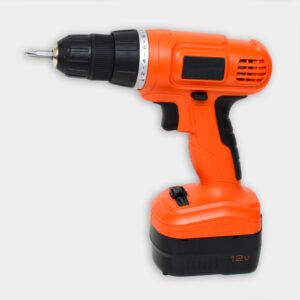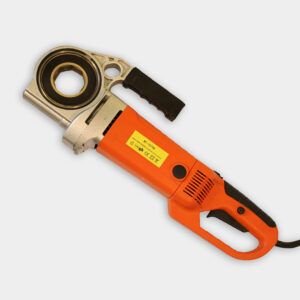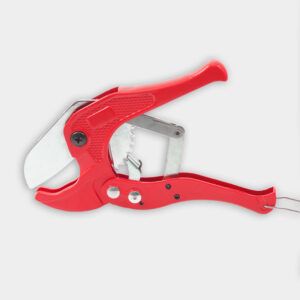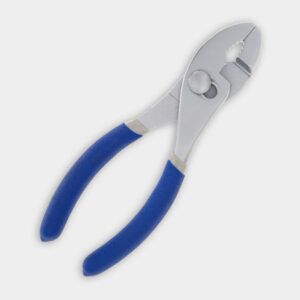Project details
Skill
Cost
Estimated Time
*Costs in this article sourced from Angi.
Home fire sprinkler systems are designed to quickly detect and suppress fires, potentially saving lives and minimizing property damage. In the accompanying video, This Old House plumbing and heating contractor Richard Trethewey explores the installation process of a residential fire sprinkler system with expert Jack Viola in this video.
Understanding Residential Fire Sprinkler Systems
Modern residential fire sprinkler systems can detect and suppress fire in its early stages, giving occupants valuable time to evacuate and preventing the rapid spread of flames.
An adequate understanding of your fire prevention systems can significantly impact your safety and the preservation of your home.
How Fire Sprinkler Systems Work
Fire sprinkler systems consist of a network of pipes and sprinkler heads strategically placed throughout the home. When a fire occurs, the heat activates individual sprinkler heads, releasing water to control or extinguish the fire.
Contrary to popular belief, only the sprinkler heads in the immediate vicinity of the fire will activate, minimizing water damage to unaffected areas. These systems provide maximum efficiency in controlling fires while safeguarding the rest of the home from unnecessary water exposure.
Benefits of Installing a Fire Sprinkler System
Installing a fire sprinkler system in your home offers numerous advantages beyond safety:
- Increased Safety for Occupants: They provide crucial time for escape and can even extinguish fires before they become deadly.
- Peace of Mind for Homeowners: Knowing that your home has an additional layer of protection against fire risks is reassuring.
- Potential Insurance Discounts: Many insurance companies offer reduced premiums for homes with sprinkler systems.
- Reduced Property Damage: By controlling fires early, they limit the structural impact and damage to personal belongings.
Planning Your Fire Sprinkler System Installation
Careful planning and preparation can significantly enhance the system’s performance and reliability.
Assessing Water Pressure and Supply
The first step in planning a fire sprinkler system is determining the home’s water pressure. As Viola explains, adequate water pressure is crucial for the system’s effectiveness. A professional test of the water pressure in the street ensures it meets the requirements for a residential fire sprinkler system.
Custom System Design
Once an assessment of the water pressure is complete, a layout technician will create a custom design for the sprinkler system. This design takes into account the specific layout of each room for optimal coverage throughout the home. The plan will indicate the placement of sprinkler heads, pipe routes, and other essential components.
Custom designs ensure that each home gets the best possible configuration, boosting both efficiency and aesthetics.
Components of a Residential Fire Sprinkler System
Each part of the sprinkler system is vital to its overall function and reliability.
Piping
The backbone of any fire sprinkler system is its network of pipes. These can feature various materials, including:
- Black Steel
- Copper
- Plastic (CPVC)
In the video, Viola showcases residentially certified plastic piping.
The choice of piping material may depend on local building codes, cost considerations, and the specific requirements of your home. Considerations such as durability, temperature resistance, and installation ease can influence this decision.
Sprinkler Heads
Modern residential fire sprinkler systems use concealed sprinkler heads that blend seamlessly with your home’s decor. These heads are effective and aesthetically pleasing. The sprinkler head sits behind a cover plate that drops off when temperatures reach 135 degrees Fahrenheit, which activates the sprinkler.
Control Valves and Monitoring Systems
A residential fire sprinkler system typically includes control valves to regulate water flow and pressure. Additionally, many modern systems communicate with a central monitoring station to automatically notify the fire department in case of activation. These advanced features add layers of protection and create a timely response in emergencies.
The Installation Process
Installing a fire sprinkler system is a complex process, so we strongly recommend hiring a licensed professional. Here’s an overview of the typical installation steps:
- Conduct a Thorough Site Assessment: Create a detailed system design based on the home’s layout and specific needs.
- Obtain Necessary Permits: Secure approvals from local authorities to comply with building regulations.
- Install the Main Water Supply Line and Control Valves: These components control the system’s flow and pressure.
- Run Piping Throughout the House: Conceal pipes within walls, floors, and ceilings to maintain the home’s aesthetics.
- Install Sprinkler Heads in Each Room: Follow the design plan for optimal coverage.
- Connect the System to the Home’s Electrical Supply and Monitoring System: This step integrates the system with your home’s infrastructure and emergency services.
- Conduct Thorough Testing and Inspections: Ensure proper functionality and compliance with safety standards.
Maintenance and Testing
Regular maintenance not only prolongs the system’s life but also optimizes its performance and efficacy.
Routine Inspections
Homeowners should conduct visual inspections of their sprinkler system regularly, checking for any signs of damage, leaks, or obstructions.
Schedule a professional inspection annually to assess the system’s overall condition and performance. Regular checks allow you to spot and address minor issues before they become major problems.
Testing Procedures
Periodic testing of the fire sprinkler system is essential to verify its functionality. This may include:
- Alarm Tests: Confirm proper activation of the monitoring systems to alert authorities in the event of a fire.
- Flow Tests: Ensure that water pressure meets the required levels for effective operation.
- Sprinkler Head Inspections: Check for any signs of corrosion or damage that could impede performance.
Testing is an essential part of maintaining a functional fire sprinkler system. It validates the system’s readiness and operational integrity.
Addressing Common Fire Sprinkler System Concerns
Homeowners may have concerns about installing a fire sprinkler system. Let’s address some common issues and misconceptions:
Water Damage Worries
One common misconception is that sprinkler systems can cause extensive water damage. However, only the sprinkler heads directly affected by the fire will activate, minimizing unnecessary water release. Proper system design and effective sprinklers siphon water to precise locations, reducing the risk of water damage.
Aesthetic Considerations
Modern concealed sprinkler heads are designed to be unobtrusive and blend with your home’s decor. These sleek designs address concerns about the system’s impact on a home’s appearance. New designs make it easier for homeowners to enjoy safety without sacrificing style.
Cost Considerations
While the initial cost of installing a fire sprinkler system may seem high, consider the long-term benefits and potential savings on insurance premiums.
The cost typically starts at $2 to $7 per square foot but can vary based on the home’s size and the complexity of the installation. Weighing the upfront investment against future savings and safety benefits offers a clearer picture of the system’s value.
Our Conclusion
Installing a residential fire sprinkler system is a significant investment in your home’s safety. While the process requires careful planning and professional installation, the peace of mind and potential life-saving benefits make it a worthwhile consideration for many homeowners.
A well-maintained sprinkler system acts as a silent guardian, ready to protect your home and loved ones from unforeseen fire hazards. Carefully considering the factors discussed can help you choose the best system for your needs, ensuring both safety and satisfaction.




